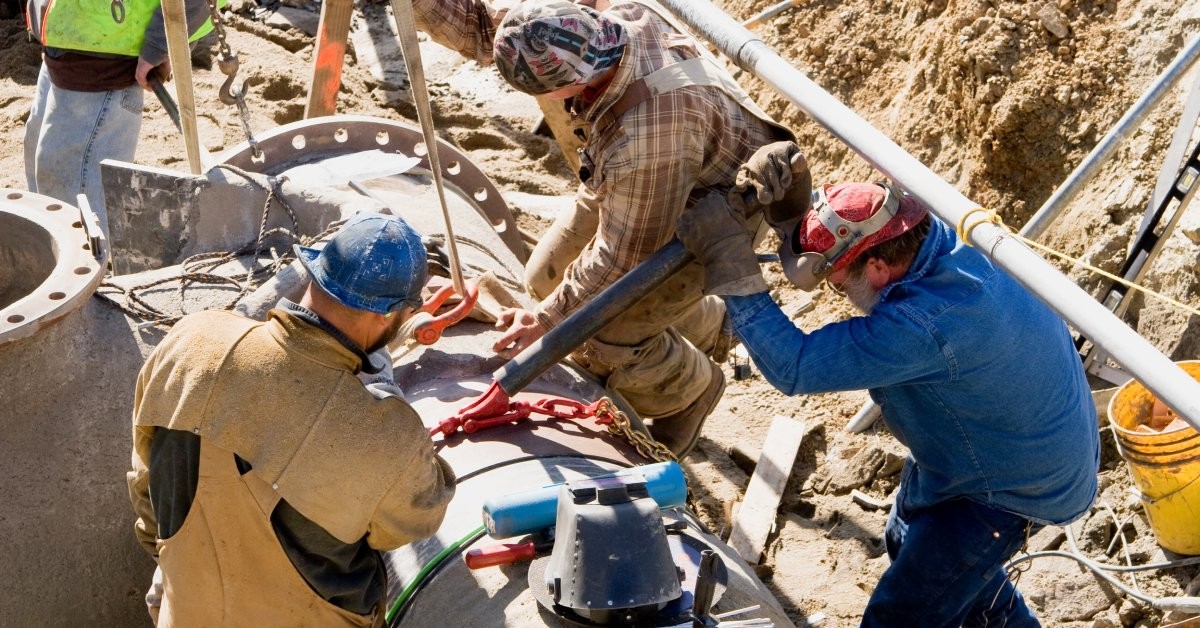How To Choose the Right Pipe Plug for the Job

When it comes to large plumbing systems, the seemingly small components have a pivotal role in the success of a project, whether they play a part the initial installation or ongoing maintenance. One such crucial element is the pipe plug.
Although it might appear minor in comparison to other materials and tools, selecting the right pipe plug is essential for ensuring a project’s integrity and safety. This walkthrough will guide you through the process of choosing the correct pipe plug for various applications, helping you make informed decisions that will benefit your work in the long run.
Find out how to choose the right pipe plug for the job and ensure your project’s success.
The Power of Pipe Plugs
In order to choose the right pipe plug, you must understand the basic function of these invaluable materials.
Pipe plugs serve a vital function in construction and engineering projects. They are used to temporarily or permanently block the ends of pipes during maintenance, testing, and other tasks where stopping the flow in a pipeline is crucial.
Choosing the wrong plug can lead to leaks, contamination, or even structural failures. That's why it's paramount to understand the importance of selecting the right pipe plug for each job.
This knowledge can mean the difference between a smooth operation and a costly setback.
Evaluating the Project’s Needs
Understanding your specific requirements is the cornerstone of selecting the ideal pipe plug for any project. Begin by examining the substance—whether fluid or gas—that will be conveyed through the pipe.
Each substance may have specific restrictions or requirements, such as the necessity for corrosion resistance or permeability considerations. For instance, pipes carrying high-pressure gas will need robust plugs capable of withstanding significant force, while those meant for water might have more flexibility.
In addition to understanding the contents of the pipe, it is vital to evaluate the pressure levels within the system. This involves considering both the normal operating pressures and any potential surge pressures that may occur. Choosing a plug that can handle these variations is crucial to maintaining the integrity of the entire system.
Environmental factors, such as exposure to extreme temperatures—whether freezing or scorching—should also guide your choice. Some materials expand or contract drastically with temperature changes, which can affect how well a plug holds.
In settings where corrosive elements are present, whether due to chemicals or saline environments, the material's resistance to corrosion becomes a top priority.
Additionally, consider the duration for which the plug will be in place. Temporary applications, such as those required during maintenance, might call for different solutions than those needed for permanent sealants.
By thoroughly understanding the dimensions of your specific needs, you empower yourself to make more personalized choices, ensuring that the pipe plug you choose is not only effective but also aligns perfectly with the project's conditions and demands.
Types of Pipe Plugs
Many pipe plugs are available, and they are each carefully designed for specific applications.
Mechanical pipe plugs are commonly used for high-pressure applications and provide a secure seal. They are robust and versatile plugs with a mechanical tightening mechanism that effectively seals pipe ends under extreme pressure conditions.
Inflatable pipe plugs, on the other hand, are versatile and can be easily used in pipes of various diameters. Known for their adaptability, inflatable pipe plugs are carefully constructed from flexible materials like rubber, allowing them to expand and conform to a pipe's shape upon inflation.
This makes them suitable for pipes of varying diameters and irregular shapes. They are particularly beneficial in situations where quick deployment is necessary, such as emergency leak control.
You can also find pipe plugs that are specially designed to enhance chemical resistance. For instance, at Rental Tools Online, our pipe plug rentals include inflatable models featuring chemical-resistant chloroprene.
Understanding the different types of pipe plugs can help you choose the most suitable option for your specific project requirements.
Selecting the Right Material
The material of the pipe plug is another critical factor to consider. Metal plugs, like those made from aluminum or steel, are durable and can withstand high pressures and temperatures.
Rubber and plastic plugs are more flexible and resistant to chemicals but may not offer the same level of strength as metal plugs. Choosing the right material impacts not only the performance but also the longevity of the plug.
For example, in a high-temperature environment, a metal plug would be more suitable, while a chemical-resistant rubber plug would be ideal for a chemical processing plant.
Sizing and Compatibility
A critical step in choosing the right pipe plug for the job is assessing the size requirements because an ill-fitting plug can lead to costly problems, such as leaks or structural failures.
The first step toward sizing properly is obtaining accurate measurements of the pipe's diameter and length. This involves using precise measurement tools, especially in large-scale projects where even a slight miscalculation can have significant consequences. The plug's dimensions should match these measurements to provide a secure seal.
Beyond just the size, compatibility considers the type of connection the pipe utilizes. Pipes can have a variety of connection types, such as threaded or flanged.
Moreover, it's important to verify that the chosen plug's material and design can withstand the pipe's operational conditions. Evaluate whether the plug material is suitable for the pressure and temperature it will encounter.
A plug that fits well initially could fail under pressure or temperature changes if its material properties are not properly aligned with those of the pipe. This aspect of compatibility is particularly significant in environments with variable conditions, where a plug must adapt to changes without losing its efficacy.
Find the Right Pipe Plug Now
Choosing the right pipe plug is essential for the success of many construction and maintenance projects.
By understanding your needs, knowing the different types of pipe plugs, selecting the appropriate material, and ensuring proper compatibility, you can make successful decisions that enhance the performance and safety of projects.
The right pipe plug is not just a minor component; it’s a crucial element that can significantly impact the outcome of your project today. When it comes to ensuring the integrity and success of your projects, don't leave anything to chance. Consider the specialized insights shared here and take proactive steps to select the ideal pipe plugs for your needs.







